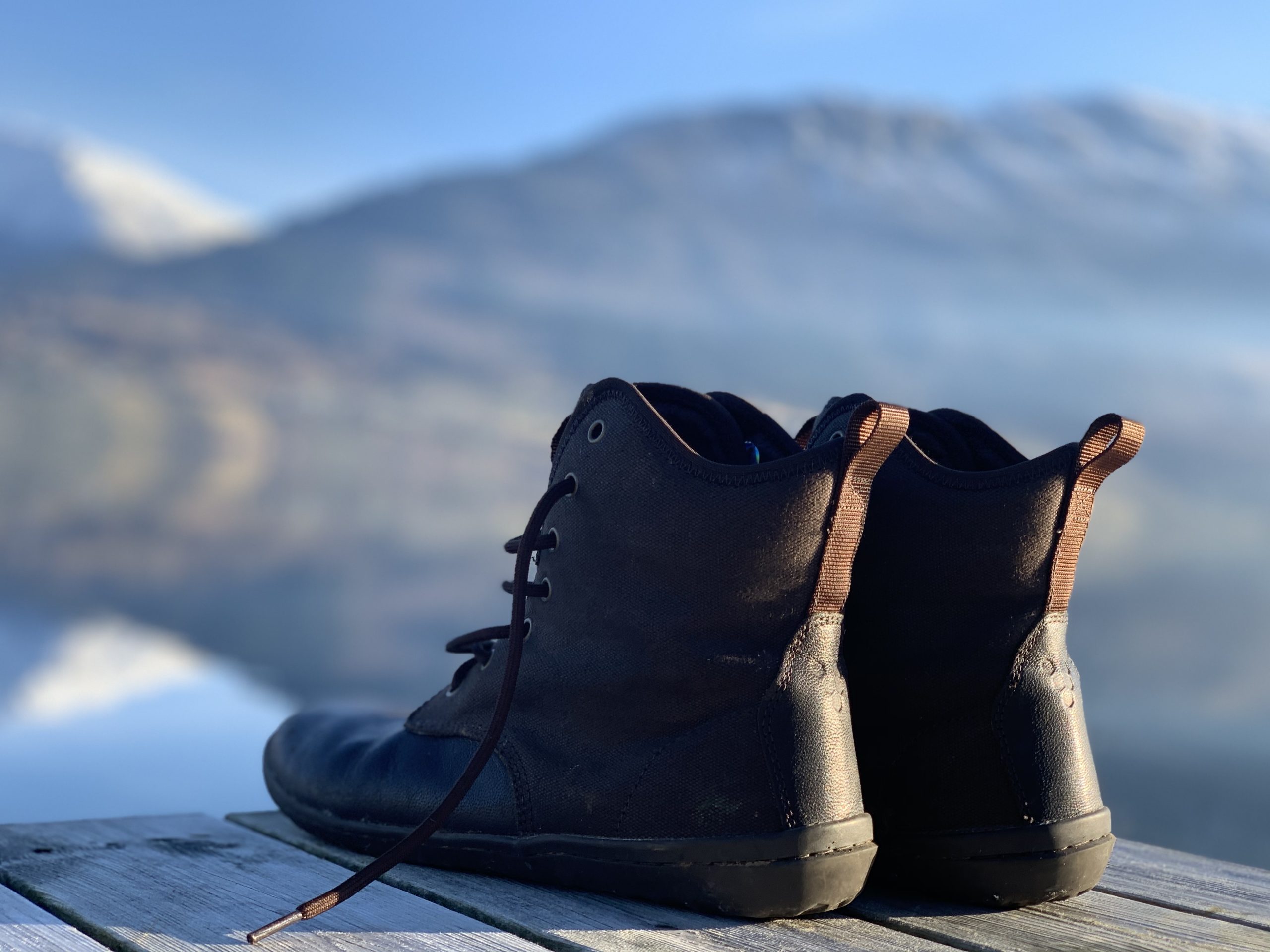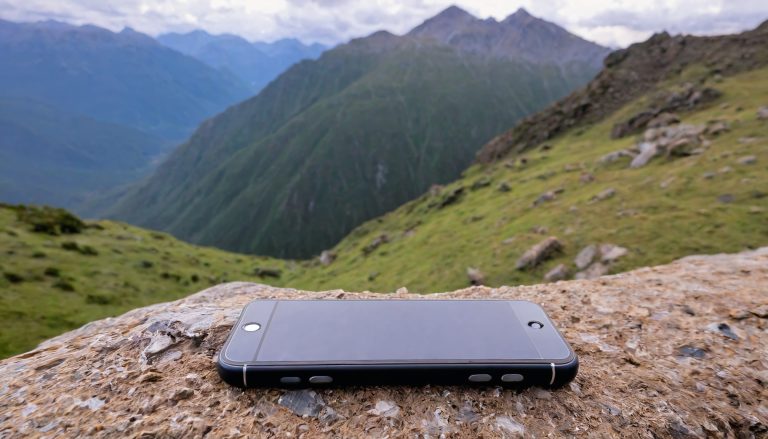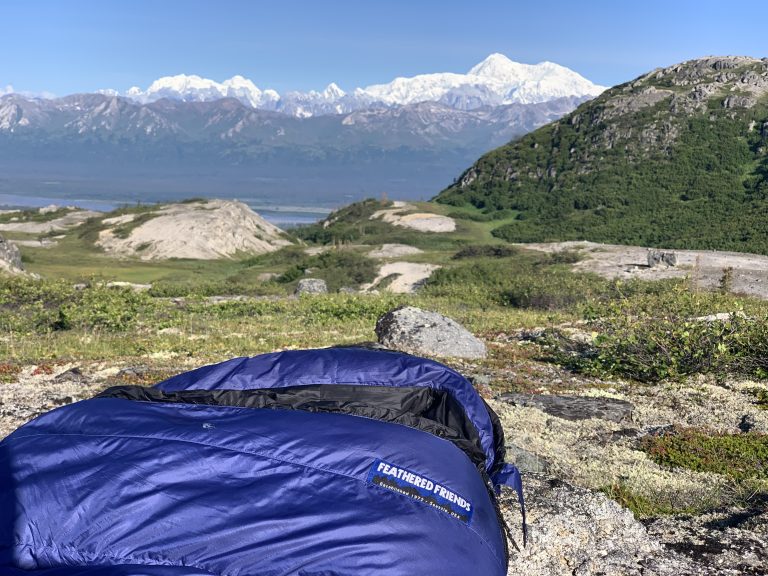Once you go barefoot, you never go back. I have been wearing barefoot shoes for about five years and, while I love them, but I am also well aware that the rigors of backpacking require different footwear than normal city walking.
There are plenty of recommendations for barefoot hiking shoes, but I find it difficult to find reliable content on barefoot backpacking footwear, especially if you’re trekking rugged trails in cold climates – especially on our favorite rugged Alaska trails!
If you’re looking for a barefoot shoes that would work for you with weight on your back and jagged rock and ice under your feet, then this is the article for you.
What Makes a Barefoot Shoe a Barefoot Shoe?
Generally, barefoot shoes earn their title by adhering to the following four categories:
- Lightweight Design: Barefoot shoes tend to be lighter, reducing the strain on your legs, and making them ideal for long-distance treks.
- Flexibility and Sole Thickness: Thin soles allow for natural foot movement and provide a close connection with the ground, enhancing balance and stability. They make me feel much more agile.
- Zero Drop: The front of the sole should be the same height as the heel of the shoe. This allows your foot to land naturally, and prevents your calf from shortening.
- Wide Toe Box: Perhaps the most important aspect of a good barefoot boot is a wide toe box that allows for natural toe splay, improving comfort and stability on uneven trails.
What to Consider When Buying Barefoot Shoes for Backpacking
Selecting the right barefoot shoes for backpacking requires considering several key features to ensure comfort, durability, and performance.
- Don’t Overdo the Thin Sole: While I love feeling the ground closely, I personally don’t place too much emphasis on having an ultra-thin sole. I like feeling connected to the trail as much as the next person, but a bruised heel is something you definitely want to avoid on a backpacking trip. I wouldn’t hike in anything less than 3mm.
- Durability and Materials: Choose shoes made with high-quality, weather-resistant materials that can handle rugged environments.
- Insulation for Cold Climates: While minimalistic footwear has its benefits, make sure to choose a pair with enough insulation for colder climates like Alaska. Barefoot shoes without insulation can leave your feet freezing, and warmth is essential to keep you comfortable and safe.
- Expect Faster Wear and Tear: Barefoot hiking shoes typically wear out faster than other types of hiking footwear. With their minimalist construction, they’re not always built for the same longevity, so it’s smart to check for signs of wear regularly. I highly recommend treating the leather frequently, with some sort of beeswax or weatherproofing cream. I always use Atsko Sno-Seal, and it’s worked great.
- Breathability and Moisture-Wicking: Keeping your feet dry and cool is essential for comfort, especially on long treks. Look for breathable, quick-drying fabrics. I tend to avoid waterproof boots, especially Gore-tex. I expect my shoes to get wet, no matter how waterproof they are, and I’d rather opt for a faster drying materials.
Top 5 Best Barefoot Shoes for Backpacking in 2025
Here’s a list of the top 10 barefoot shoes designed to provide comfort and performance for backpackers venturing into the great outdoors in 2025. As always, we aim to not overwhelm with too many choices. Instead, we focus on the shoes we actually recommend:
1. Vivobarefoot Tracker Forest Esc
I have the older Tracker FG, and I love them. I have been very tough on them, but also take care of the leather well. They are incredibly comfortable, warm enough for backpacking in Alaskan in the fall, and provide very good protection for my feet. I love them as they feel like the perfect combination of comfortable, light, and flexible like a trail-runner shoe, but ankle high, supporting, and warm, like a traditional hiking boot.
However, the stitched sole of the Tracker Forest solves my biggest issue with the original Trackers, which was that the glued sole would often peel off. The stitching is much more reliable and durable. These are the barefoot backpacking boots I recommend.
- Best for: Long-distance hikers in wet conditions
- Specs: Water-resistant leather, rugged outsole
- Sole Thickness: 2.5mm with 4mm lugs– my ideal thickness
- Insulation Level: Moderate – ideal for cool, wet weather
- Waterproof: Yes, water-resistant. The only downside is they dry slower than most of the other options on this list, but not as slowly as a gore-tex boot.
- Weight: 14 oz (per shoe, men’s size 9)
- Pros: Eco-friendly materials, excellent ground feel for stability
- Cons: Slightly heavier than other barefoot options
- Warranty: 100 days, no questions asked return policy + 6 month manufacturer’s warranty. They have excellent customer service and have even refunded a pair of shoes and let me keep them, when something went wrong in the first 100 days.
- Why It’s Great: With water-resistant leather and a robust build, the Tracker FG2 is my favorite for multi-day hikes in cool, wet environments where protection and comfort are essential.
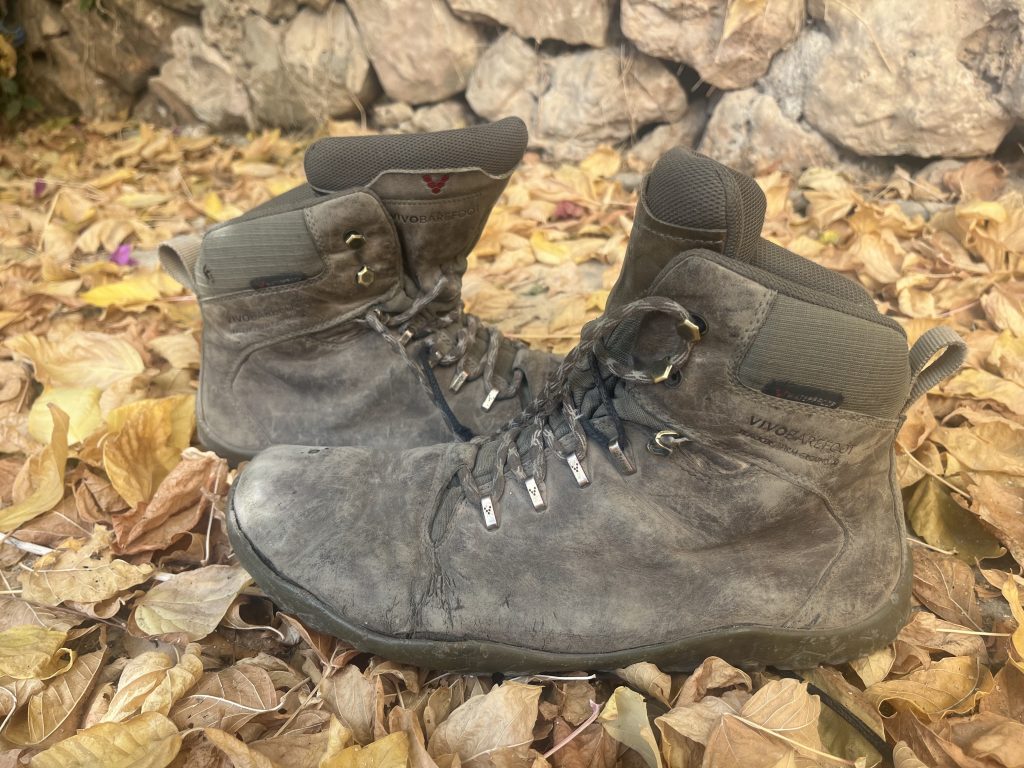
2. Vivobarefoot Magna Lite WR SG
The Magna Lite are a great option for those who prefer to hike in trail-runner-type shoes. They have great grip, are very light, and have served me well across rugged terrains. However, in comparison to the Vivo Trackers, they’re not as warm. However, they are very comfortable and have excellent traction. The sole has also remained adhered to the boot, a result of the special stitched sole, something that I’ve had issue with when it came to past Vivo boots.
- Best for: Versatile backpackers facing varying terrains. This is an excellent travel shoe as it can also be worn when exploring cities.
- Specs: Water-resistant upper, tough outsole.
- Sole Thickness: 2.5mm base and 5mm lug height
- Insulation Level: Moderate – suitable for mild to moderate climates. But your feet will get cold in extreme environments.
- Waterproof: Yes, water-resistant, but fairly fast drying
- Weight: 11.2 oz (per shoe, men’s size 9)
- Pros: Lightweight yet rugged, designed to handle mud, snow, and trails. Very good grip
- Cons: Higher price point and not quite as insulated or supporting as the Trackers.
- Warranty: 100 days, no questions asked return policy + 6 month manufacturer’s warranty. They have excellent customer service and have even refunded a pair of shoes and let me keep them, when something went wrong in the first 100 days.
- Why It’s Great: The Magna Lite WR SG’s water-resistant construction makes it an excellent choice for wetter conditions and unpredictable weather, ideal for backpacking in Alaska’s varying climates.
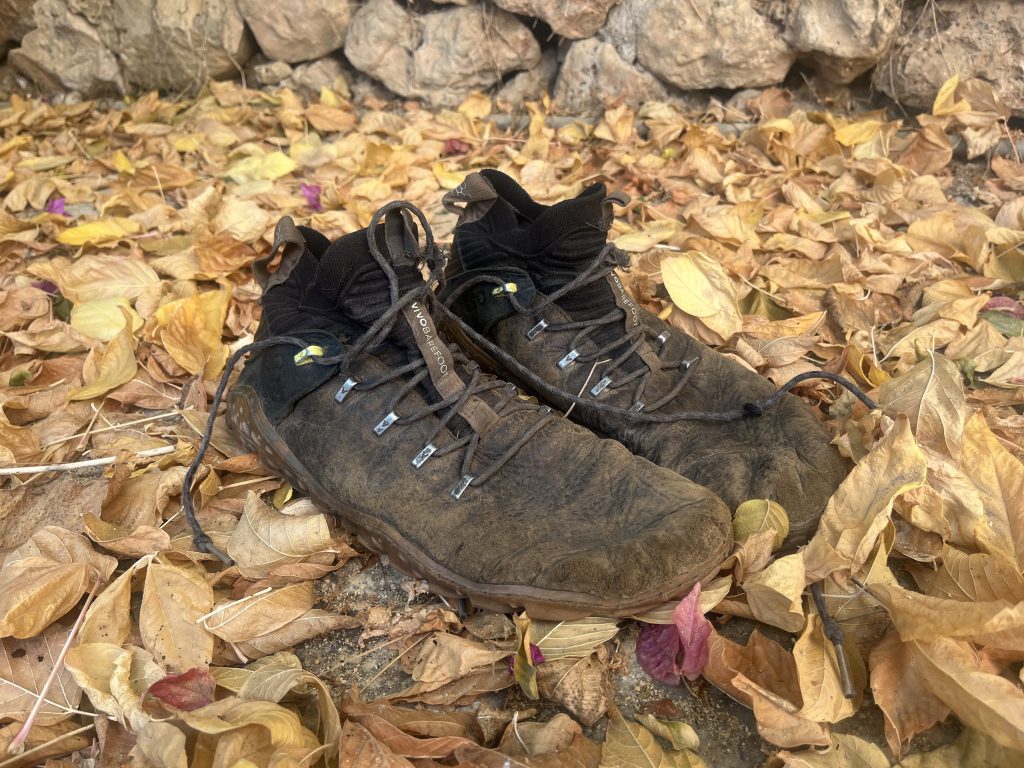
3. Xero Shoes Xcursion Fusion
These are a much more affordable barefoot shoe. Personally, I don’t like Xero as much as Vivo. They certainly aren’t as stylish and I’ve never found them to be as comfortable. However, they are much more affordable and the Xcursion is light, fast drying, and very grippy. If I was willing to sacrifice a little bit on comfort, warmth, and style, but wanted to save a good penny, I would get these over the Vivos.
- Best for: Lightweight backpacking with extra protection. Great for variable trail conditions.
- Specs: Water-resistant membrane, rugged sole for grip.
- Sole Thickness: 5.5mm
- Insulation Level: Moderate – ideal for mild to moderate conditions but can get cold in winter.
- Waterproof: Yes, water-resistant, quick-drying.
- Weight: 12 oz (per shoe, men’s size 9)
- Pros: Comfortable, flexible, zero-drop design.
- Cons: Lacks extreme cold insulation.
- Warranty: 24-month manufacturer’s warranty for defects, with flexible returns.
- Why It’s Great: The Xcursion Fusion provides solid protection with excellent flexibility, ideal for backpackers who want ground feel with a bit more security on variable trails.
4. Merrell Trail Glove 7
Light, flexible, and comfortable, I would recommend the Merrells for anyone who would be comfortable backpacking in trail runners. This is especially true for anyone who has ultralight gear. However, they have minimal insulation and I would not wear them in colder environments.
- Best for: Rocky, technical trails with elevation
- Specs: Thin sole for flexibility, reinforced toe for rocky paths
- Sole Thickness: 4mm
- Insulation Level: Minimal – suitable for warmer or mild climates
- Waterproof: No
- Weight: 7.8 oz (per shoe, men’s size 9)
- Pros: Durable, high ground feel with extra protection
- Cons: Not insulated or waterproof, best for dry weather
- Warranty: Merrell offers a 12-month warranty on manufacturing defects.
- Why It’s Great: With a flexible sole and reinforced toe, the Trail Glove 7 is an excellent choice for technical, rocky trails, though its lack of waterproofing makes it more suitable for drier conditions.
5. Freet Mudee or Mudee 2
Freet is a lesser known barefoot brand, but makes one of the better backpacking boots. They are comfortable, lightweight, and have a very wide toe box. The issue is that they’re not quite as rugged or comfortable for long-range rugged backpacking. I would happily buy these if I was doing ultralight backpacking or was hiking on groomed trails, but I’d be concerned with hiking on rugged routes in Alaska, and thus, I have taken them on those trails.
- Best for: Versatile hikes in wet conditions. Designed for light backpacking and all-weather trekking.
- Specs: Water-resistant upper, flexible design.
- Sole Thickness: 4mm
- Insulation Level: Moderate – suitable for cool, damp environments, but not ideal for extreme cold.
- Waterproof: Yes, water-resistant.
- Weight: Approximately 12 oz (varies by size)
- Pros: Good water resistance, lightweight, flexible.
- Cons: Limited availability, not for extreme conditions.
- Warranty: 12-month warranty; 100-day returns available through Freet.
- Why It’s Great: The Mudee balances protection and flexibility, making it a reliable choice for wet conditions and moderate trails where flexibility and comfort are priorities.
Shoes We Considered Recommending But Didn’t:
- Lems Boulder Boot (Insulated) – while this shoe is well insulated and has good grip, the 9mm sole is annoyingly thick and the boot is not flexible or comfortable enough (in my opinion) for long range hikes. It’s more of a winter adventure boot.
- Vibram FiveFingers V-Trail 2.0 – I truly love this shoe. It is super thin, fitted to the toes, super comfortable and incredibly fun to run around in. However, while we have done some backpacking in Vibram FiveFingers, we find them best for desert treks or flat, less rocky trails with lighter loads. On rocky, rugged trails, you will almost inevitable hurt your feet.
Comparison Chart Of The Best Barefoot Backpacking Shoes
| Shoe Model | Best For | Sole Thickness | Insulation Level | Waterproof | Weight |
|---|
| Vivobarefoot Magna Lite WR SG | Versatile terrains, Alaska backpacking | 2.5mm base with 5mm lugs | Moderate (mild to moderate) | Yes, water-resistant | 11.2 oz |
| Vivobarefoot Tracker FG2 | Long-distance, wet conditions | 2.5mm with 4mm lugs | Moderate (cool, wet weather) | Yes, water-resistant | 14 oz |
| Xero Shoes Xcursion Fusion | Budget-conscious hikers or beginners | 5mm | Minimal (warm to mild) | No | 12 oz |
| Merrell Trail Glove 7 | Rocky, technical trails with elevation | 4mm | Minimal (warmer or mild) | No; gore-tex option available | 7.8 oz |
| Freet Mudee | Wet conditions and moderate trails | 4mm | Moderate (cool, wet weather) | Yes, water-resistant | 12 oz |
Hiking in Alaska with Barefoot Shoes
Backpacking in Alaska presents unique challenges and rewards, and choosing barefoot shoes requires considering Alaska’s diverse terrain and climate. Here’s how to navigate hiking in Alaska with barefoot shoes:
- Challenges of Alaska’s Terrain: Alaskan trails vary greatly, from rocky river beds and forest trails to tundra and rugged mountainsides. Look for barefoot shoes with strong tread to handle the rocky, often wet trails. The boot should be very tight around the ankle and foot, because, if there is any slipping, the uneven terrain will rip your foot apart.
- Climate Considerations: The weather can be unpredictable in Alaska, with rain and chilly temperatures. Shoes with some water resistance and a thermal lining can make hikes more comfortable.
- Preparing for Different Trails: Since Alaska’s landscapes range from forested trails to mountainous climbs, pack a pair of lightweight socks that provide additional cushioning for varied terrains. It’s also important to have some thickness on the sole, especially if you plan to use micro-spikes on glacial crossings.
Our Recommendation For A Barefoot Shoe For Alaska Backpacking:
If you’re planning to backpack in Alaska’s rugged, often unpredictable terrain, we recommend the Vivobarefoot Tracker Forest ESC as the ideal barefoot shoe. This boot strikes the perfect balance between the minimalist design of barefoot footwear and the necessary durability and protection for Alaska’s challenging landscapes. It is super comfortable, fairly warm, and very reliable.
I wish I could recommend a shoe that wasn’t $275, but I just can’t. If you’re going to be galavanting across rugged mountains with weight on your back, I highly recommend that you invest in this boot.
Benefits of Barefoot Shoes for Backpacking
Switching to barefoot shoes offers numerous benefits, especially for backpackers looking to connect more closely with the trail:
- Natural Foot Alignment: Encourages proper posture and alignment, reducing stress on the knees and hips.
- Enhanced Balance and Stability: The thin soles allow you to feel the ground, promoting better balance.
- Reduced Joint Impact: A more natural gait and lighter design help lessen the impact on joints.
- Foot Strengthening and Adaptability: Barefoot shoes gradually strengthen foot muscles, making them more adaptable to uneven terrain over time.
I truly think that it is safer to hike in barefoot boots. I haven’t rolled an ankle since switching. However, if you haven’t used barefoot shoes before, I recommend making a slow and intentional transition over.
Tips for Transitioning to Barefoot Shoes for Backpacking
If you’re new to barefoot shoes, here are some tips to help with the transition:
- Gradual Adjustment: Start by wearing barefoot shoes on shorter hikes or around town to build strength and adapt to the barefoot feel.
- Break-In Period: Wear barefoot shoes for short periods at first to avoid strain, then gradually increase your hiking time.
- Pairing with Lightweight Gear: Barefoot shoes work well with minimalist packing strategies.
- Ideal Trail Types: Smooth, well-groomed trails are best for beginners, while seasoned users may feel comfortable taking them on more rugged terrain.
- Do ankle and foot stabilizing exercises: Really, anything that builds balance, especially when standing on one foot, will be good for this. Also, practice spreading your toes as you walk.
Conclusion: The Best Minimalist Shoes for Rugged Trails and Cold Climates
Choosing the right barefoot shoes for backpacking requires careful consideration of your specific needs, especially in challenging environments like Alaska. While a traditional hiking boot may offer maximum protection, barefoot shoes provide a unique connection to the trail, promoting natural movement, agility, and balance. Each shoe in this guide has been chosen to offer that barefoot experience while addressing the rigors of backpacking, from durability and insulation to waterproofing and traction.
Whether you’re drawn to the rugged protection of the Tracker Forest ESC, the lightweight agility of the Magna Lite WR SG, or the versatility of the Freet Mudee, these shoes allow you to experience the outdoors in a more natural way. Remember, transitioning to barefoot shoes takes time, but the benefits—enhanced stability, foot strength, and reduced impact on joints—can make every step a rewarding experience.
Ultimately, the best barefoot backpacking shoe is one that fits your comfort, climate, and terrain needs. Take it slow, explore the options, and enjoy the unique freedom that barefoot hiking shoes bring to your backpacking journey. Here’s to many miles of adventure, closer to the earth, and connected with every step.

